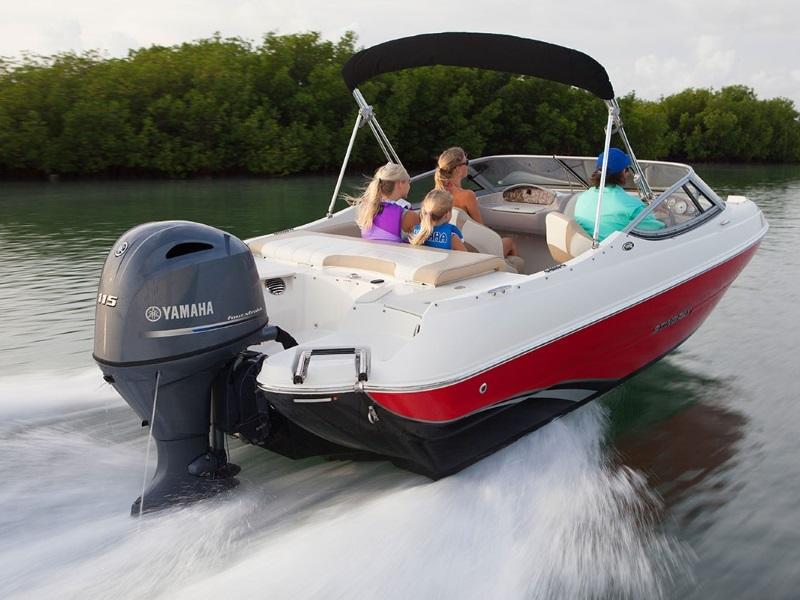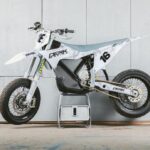When shopping for outboard motors for sale, it’s easy to get overwhelmed by the sheer number of options. From horsepower to fuel efficiency and brand reliability, there are many factors to weigh before making your investment. Whether you’re a seasoned boater or a first-time buyer, choosing the right outboard motor is crucial for the performance and safety of your boat. This article offers expert insights and practical advice to help you navigate the buying process confidently.
Understanding the Basics of Outboard Motors
Outboard motors are self-contained engine systems that include the engine, gearbox, and propeller. They are mounted externally on the stern of a boat and are commonly used in smaller watercraft like fishing boats, dinghies, and pontoons. When browsing outboard motors for sale, you’ll encounter two main engine types: two-stroke and four-stroke. Two-stroke motors are generally lighter and more powerful, while four-stroke motors are quieter and more fuel-efficient. Understanding which type best suits your boating needs is the first step toward making a smart purchase.
Determine the Right Horsepower
One of the most important factors in selecting the right motor is determining the appropriate horsepower. Too little power and your boat will struggle to plane, especially when carrying passengers or gear. Too much, and you may waste fuel or exceed the boat’s safety limits. Check the manufacturer’s specifications for your boat to find the maximum and minimum horsepower ratings. Match your choice accordingly, especially when exploring outboard motors for sale tailored to your specific vessel type.
Consider the Shaft Length
Choosing the correct shaft length is essential for optimal performance. A mismatch between the shaft length and your boat’s transom height can lead to poor handling and reduced efficiency. Standard shaft lengths are typically 15, 20, and 25 inches. Measure from the top of your boat’s transom to the bottom of the hull to determine the correct shaft size. Always ensure your motor’s shaft length matches this measurement to avoid complications in the water.
Fuel Type and Efficiency
Outboard motors for sale are available in gasoline and electric variants. Gas-powered motors dominate the market, offering powerful performance for long-distance or high-speed boating. Electric outboards, on the other hand, are quieter, eco-friendly, and ideal for small boats used in lakes or restricted areas. Consider how often you use your boat and the type of water you navigate. A fuel-efficient four-stroke motor might be ideal for weekend trips, while electric options suit short-distance recreational use.
Manual vs. Electric Start
Many entry-level outboard motors come with manual pull-start mechanisms. While reliable, they can be physically demanding, especially in emergency situations. Electric start motors offer greater convenience with push-button ignition and are typically included in mid-range to premium models. If ease of use is a priority, especially for family or elderly boaters, opt for an electric start motor when browsing outboard motors for sale.
Weight and Portability
The weight of an outboard motor impacts both installation and fuel efficiency. Lightweight models are easier to transport and mount, making them perfect for inflatable boats, tenders, or small dinghies. On the other hand, heavier motors often deliver greater horsepower but may require assistance during setup. When comparing outboard motors for sale, always consider the balance between portability and performance based on your intended use.
Steering Options: Tiller vs. Remote
Outboard motors come with two primary steering systems: tiller steering and remote steering. Tiller steering is common in smaller boats and involves manually operating a handle attached to the motor. Remote steering uses a steering wheel and is often integrated with throttle controls for larger or more sophisticated boats. Choose the system that offers better comfort and control for your boating style. Remote steering is especially useful when navigating choppy waters or long distances.
Cooling System: Air or Water
Most outboard motors are cooled by water or air. Water-cooled systems are more common and effective at regulating temperature during extended use. Air-cooled engines are simpler and require less maintenance but can be noisy and are often limited to smaller applications. If you plan to use your motor for long durations or in warmer climates, a water-cooled motor is typically more reliable and efficient.
Reliability and Brand Reputation
When investing in outboard motors for sale, reliability is key. Stick with trusted brands that offer strong after-sales service, warranties, and spare part availability. Brands like Yamaha, Mercury, Honda, Suzuki, and Tohatsu have long-standing reputations for durability and performance. Read reviews, ask fellow boaters for recommendations, and consult marine mechanics to understand which brands perform best under your specific conditions.
Maintenance and Parts Availability
Even the best outboard motors require routine maintenance. Check how easy it is to service the engine and whether replacement parts are readily available in your area. Some brands offer digital maintenance reminders or app integration for diagnostics. Consider the long-term costs of ownership, including oil changes, impeller replacements, and spark plug maintenance. A motor with accessible service centers will save you time and frustration down the road.
Noise Levels and Emissions
Modern outboard motors for sale often comply with stricter environmental regulations. Four-stroke and direct fuel-injection two-stroke engines are quieter and cleaner, producing fewer emissions than older models. If you fish or cruise in noise-sensitive areas, a low-emission motor can enhance your experience without disturbing wildlife. Additionally, some lakes and marinas enforce regulations on noise and emissions, making this an essential consideration.
New vs. Used Outboard Motors
Buying a used motor can be cost-effective, but it requires careful inspection. Always request maintenance records and inspect the motor for signs of wear, rust, or corrosion. Test the compression of each cylinder and check the condition of the propeller and lower unit. New outboard motors offer warranties, modern technology, and peace of mind, albeit at a higher upfront cost. Weigh your budget against the risks and benefits before committing to a used unit.
Budgeting for Additional Costs
When browsing outboard motors for sale, remember that the motor is just one part of your total investment. You may need mounting brackets, fuel tanks, battery systems, and controls depending on the motor type. Also, factor in installation fees if you’re not comfortable mounting the motor yourself. Create a comprehensive budget that accounts for these extras to avoid surprises after purchase.
Matching the Motor to Your Activities
Your boating lifestyle should heavily influence your motor choice. If you use your boat for fishing in shallow waters, a lightweight, shallow-draft motor with good maneuverability is ideal. For long-distance cruising, prioritize fuel efficiency and comfort features. Water sports enthusiasts should look for high-horsepower models that offer fast acceleration and smooth control. Always align your choice with your most frequent activities for optimal enjoyment.
Final Thoughts
Choosing the right motor among the many outboard motors for sale requires a combination of technical understanding and practical insight. By evaluating factors like horsepower, shaft length, fuel efficiency, and brand reliability, you can make a decision that ensures safety, performance, and long-term satisfaction. With the right motor, every trip on the water becomes smoother, safer, and more enjoyable. Take your time, do your research, and invest in a motor that meets both your needs and your boat’s requirements.


